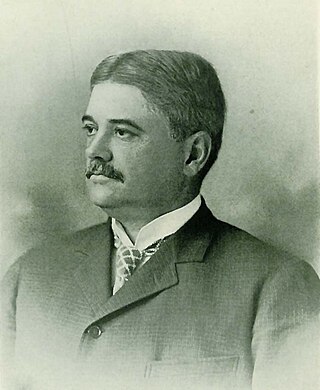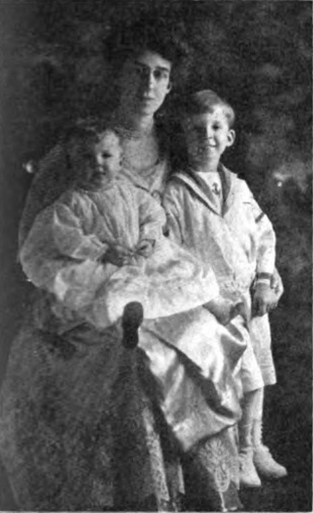Related Research Articles

Gifford Pinchot was an American forester and politician. He served as the fourth chief of the U.S. Division of Forestry, as the first head of the United States Forest Service, and as the 28th governor of Pennsylvania. He was a member of the Republican Party for most of his life, though he joined the Progressive Party for a brief period.

Amos Richards Eno Pinchot was an American lawyer and reformist. He never held public office but managed to exert considerable influence in reformist circles and did much to keep progressive and Georgist ideas alive in the 1920s.
William Flinn (1851–1924) was a powerful political boss and construction magnate in Pittsburgh, Pennsylvania, United States. Along with Christopher Magee (1848–1901), his political partner, the two ran the Republican Party machine that controlled the city for the final twenty years of the 19th century.

Hartwood Acres is a 629-acre (255 ha) county park in Allegheny County, Pennsylvania in the United States. Hartwood is considered the crown jewel of the county's 12,000-acre (4,900 ha) network of nine distinct parks.

Christopher Lyman Magee was a powerful political boss in Pittsburgh, Pennsylvania, United States. Along with William Flinn (1851–1924), his political partner, the two ran the Republican Party machine that controlled the city for the last twenty years of the 19th century. He was also a leading philanthropist and hospital patron.

Grey Towers National Historic Site, also known as Gifford Pinchot House or The Pinchot Institute, is located just off US 6 west of Milford, Pennsylvania, in Milford Township. It is the ancestral summer home of Gifford Pinchot, first chief of the newly developed United States Forest Service (USFS) and twice elected governor of Pennsylvania.

Robert Wesley "Bob" Cranmer is a veteran, businessman, author, and politician, best known as a former Republican County Commissioner of Allegheny County, Pennsylvania, from 1996 to 2000. He is the author of the horror novel The Demon of Brownsville Road.

Daisy Elizabeth Adams Lampkin was an American suffragist, civil rights activist, organization executive, and community practitioner whose career spanned over half a century. Lampkin’s effective skills as an orator, fundraiser, organizer, and political activist guided the work being conducted by the National Association of Colored Women (NACW); National Association for the Advancement of Colored People (NAACP); National Council of Negro Women and other leading civil rights organizations of the Progressive Era.

Elsie Hilliard Hillman was a Pittsburgh based philanthropist and a former Republican National Committeewoman. She was the wife of billionaire industrialist Henry Hillman. During her life, Hillman helped to advance the careers of a number of moderate Republican politicians to state and national offices. Among the politicians whose careers she fostered are President George H. W. Bush, Senator John Heinz, and Pennsylvania governors Dick Thornburgh and Tom Ridge.

The 1930 Pennsylvania gubernatorial election occurred on November 4, 1930. Incumbent Republican governor John Stuchell Fisher was not a candidate for re-election. Republican candidate and former governor Gifford Pinchot defeated Democratic candidate John M. Hemphill to win a second, non-consecutive term as Governor of Pennsylvania.

Lucy Dorsey Iams was an American welfare worker and reform legislation leader based in Pittsburgh, Pennsylvania. She played a critical role in the drafting of a 1903 Pennsylvania tenement law.
Ruth Pickering Pinchot was an American writer, critic, and activist.
Jennie Bradley Roessing was a leader in Pennsylvania's women's suffrage movement during the early 1900s. She was an active participant in the women's suffrage movement and various Pittsburgh-area organizations.

Hannah Jane Patterson was an American suffragist and social activist. She was a key member of the women's suffrage movement in Pennsylvania and worked for the National American Woman Suffrage Association. During World War I Patterson was a member of the Woman's Committee of the Council of National Defense. For her service, she was awarded with a Distinguished Service Medal. Patterson graduated from Wilson College and studied at both Columbia University and the University of Pennsylvania.

The women's suffrage movement in Pennsylvania was an outgrowth of the abolitionist movement in the state. Early women's suffrage advocates in Pennsylvania wanted equal suffrage not only for white women but for all African Americans. The first women's rights convention in the state was organized by Quakers and held in Chester County in 1852. Philadelphia would host the fifth National Women's Rights Convention in 1854. Later years saw suffragists forming a statewide group, the Pennsylvania Woman Suffrage Association (PWSA), and other smaller groups throughout the state. Early efforts moved slowly, but steadily, with suffragists raising awareness and winning endorsements from labor unions.

Marion Margery Warren Scranton was a 20th-century women’s suffrage activist and leading member of the Republican Party in the United States. Known as “the Duchess and the Grand Old Dame of the Grand Old Party,” she was described in Life magazine as “the woman Pennsylvania politicians still remember as ‘Margery,’ and ... the only woman who could wear two orchids through a coal mine and get away with it.”

Cornelia Elizabeth Bryce Pinchot, also known as “Leila Pinchot,” was a 20th-century American conservationist, Progressive politician, and women’s rights activist. She was the wife of Gifford Pinchot (1865-1946), the renowned conservationist and two-time Governor of the Commonwealth of Pennsylvania, and was also a close friend of U.S. President Theodore Roosevelt. She was the maternal great-granddaughter of Peter Cooper, founder of Cooper Union, and daughter of U.S. Congressman and Envoy Lloyd Stephens Bryce (1851–1917). She played a key role in the improvement of Grey Towers, the Pinchot family estate in Milford, Pennsylvania, which was donated to the U.S. Forest Service in 1963 and then designated as a National Historic Landmark in 1966

Lucy Kennedy Miller (1880–1962), also known as Mrs. John O. Miller, was a prominent 20th-century American suffragist who became the president of the Equal Franchise Federation of Pittsburgh, Pennsylvania and the first president of the Pennsylvania League of Women Voters (PLWV). In 1919, the League of Women Citizens of Pennsylvania called her "the woman to whom, more than to any other" was "owe[d] the triumph of" women's suffrage in the Commonwealth of Pennsylvania.

Eliza Kennedy Smith, also known as Mrs. R. Templeton Smith, was a 20th-century American suffragist, civic activist, and government reformer in Pittsburgh, Pennsylvania. Upon her death in 1964, The Pittsburgh Press described her as "a relentless, tenacious watchdog of the City's purse strings" who "probably attended more budget sessions over the years than anyone else in Pittsburgh either in or out of government".
Mary "Molly" Ella Bakewell was an American suffragist, author and social activist from Pittsburgh, Pennsylvania. The eldest of three daughters in the prominent Bakewell glassmaking family, she devoted her life to advocacy and reform. Originally she was an advocate for kindergartens, as a member of the International Kindergarten Union. In the early 20th century she devoted herself to women's suffrage working with Eliza Kennedy Smith, Lucy Kennedy Miller, Jennie Bradley Roessing, Mary Flinn Lawrence and Hannah Patterson. Later in life she attended Hartford Theological Seminary and took up the cause of female clergy. She also authored three books and an unpublished manuscript.
References
- 1 2 3 4 5 Lamendola, Lauren M. (Summer 2011). "Mary Flinn Lawrence - a Machine". Western Pennsylvania History: 22–34.
- 1 2 "Lawrence, Mary Flinn (1887-1974) · Jane Addams Digital Edition". digital.janeaddams.ramapo.edu. Retrieved 2024-05-14.
- 1 2 3 4 "Guide to the Papers of Mary Flinn Lawrence, 1903-1963," MSS 185, 2013, Heinz History Center, Pittsburgh, PA.
- 1 2 3 4 Filipek, Jaime (2023-03-20). "Women's History Month - Celebrating the Life and Legacy of Mary Flinn Lawrence". Allegheny County Parks Foundation. Retrieved 2024-05-14.
- ↑ "Pennsylvania Women and the Vote". Heinz History Center. Retrieved 2024-05-14.
- ↑ "Suffrages Organize for Red Cross". Pittsburgh Post. January 15, 1918. p. 12.
- ↑ "Woman's Hand Directs Curshing Blow; Wrecks Political Machine". The Durham Morning Herald. July 2, 1922. p. 16.
- 1 2 "Estate of Flinn". Justia Law. Retrieved 2024-05-14.